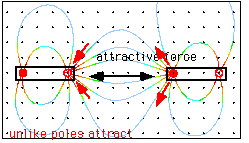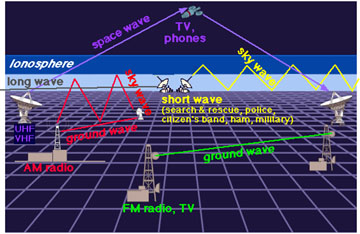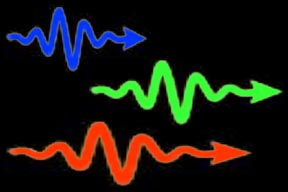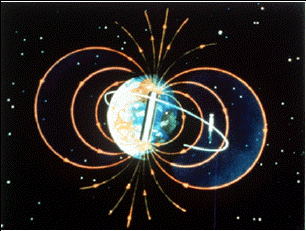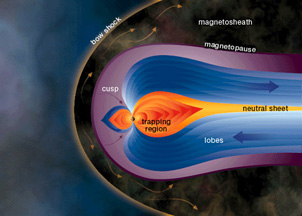Click on image for full size
Electricity and Magnetism
Electricity and magnetism are two very important topics in the science of physics. We use electricity to power computers and to make motors go. Magnetism makes a compass point North and keeps notes stuck onto our refrigerators. Without electromagnetic radiation we would all be in the dark, for light is one of its many forms!
There are two types of electricity: static electricity and electrical currents. Static electricity stays in one place, like the charge on a doorknob that can zap your hand in the wintertime. Electrical current moves and flows, like the current in the wires in a lamp. Some of the particles that make up atoms, including protons and electrons, have small electrical charges. Humans have learned to use electricity in the last couple hundred years. Our modern world uses lots of electricity in many ways. Electricity has changed the world a lot. Electricity in nature is also important. Natural electricity makes lightning flashes and the signals that flow along our nerves.
Magnetism is electricity's close cousin. Some materials, such as iron, are attracted to magnets; while others, such as copper, are not. We use the idea of "magnetic fields" to show how objects move when they are near magnets. Magnets have north and south poles. Two poles that are the same (like north and north) push each other apart. Two poles that are not the same (a north and a south) pull each other together. Electricity and magnetism are really two different parts of a single force. A moving magnet makes electricity and an electrical current makes a magnetic field. We use these facts to build motors and generators.
Magnetic fields and electrical currents make waves of energy that flow outward into space at the speed of light (which is very, very fast!). These waves of energy are called "electromagnetic radiation". There are six kinds of electromagnetic radiation. The light that we see with our eyes is one kind. Ultraviolet and infrared "light" are invisible to us, but some animals and insects can see them. Radio waves have very long wavelengths. X-rays and gamma rays have very high energies. When broken down into their constituents by spectroscopes, electromagnetic spectra reveal much about distant objects such as stars. Humans use our knowledge of this electromagnetic radiation. We build telescopes for viewing the heavens, radios to communicate, and X-ray machines for check for broken bones.
Our society uses electricity in many ways. Generators in power plants change heat from steam into electricity. That electricity flows along wires to our houses and schools. We flip a switch to turn on a light, a fan, or a dishwasher. Chips in computers use electricity to "think" and calculate. Small electrical currents carry information, like this Web page, over the Internet to your computer's screen.


